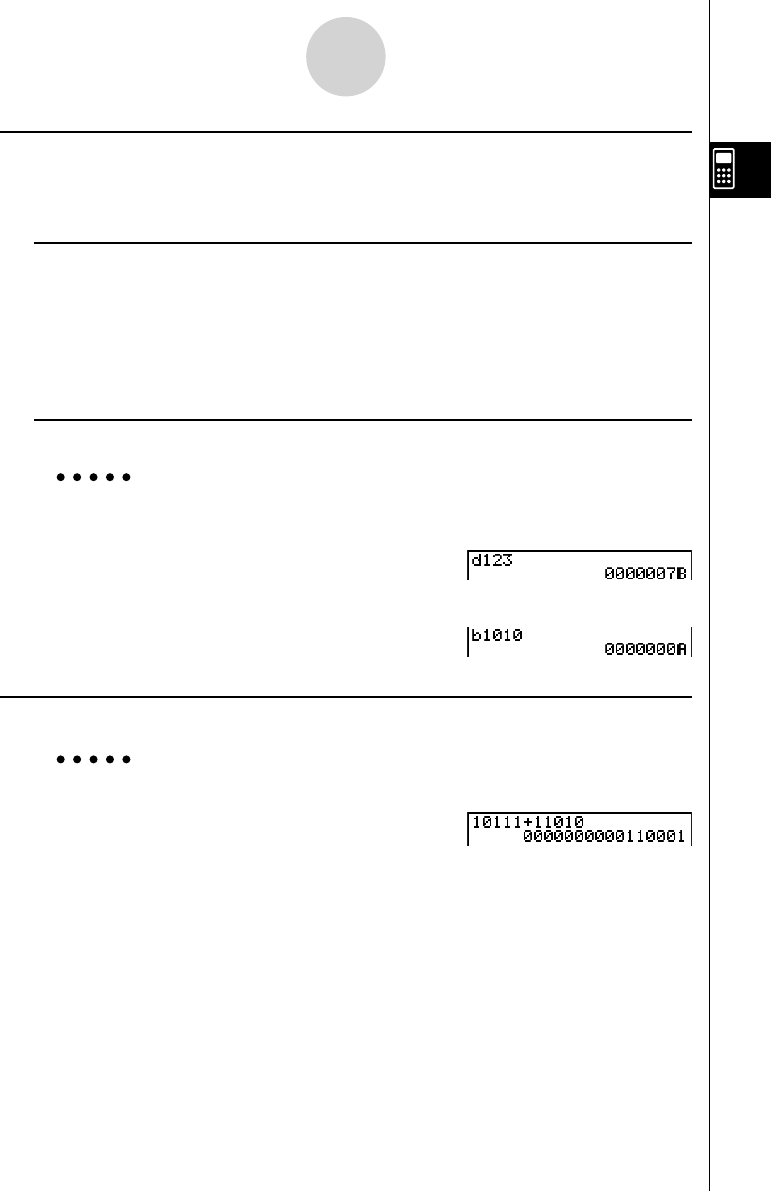User's Manual
Table Of Contents
- Quick-Start
- Precautions when Using this Product
- Contents
- Getting Acquainted— Read This First!
- Chapter 1 Basic Operation
- Chapter 2 Manual Calculations
- Chapter 3 List Function
- Chapter 4 Equation Calculations
- Chapter 5 Graphing
- 5-1 Sample Graphs
- 5-2 Controlling What Appears on a Graph Screen
- 5-3 Drawing a Graph
- 5-4 Storing a Graph in Picture Memory
- 5-5 Drawing Two Graphs on the Same Screen
- 5-6 Manual Graphing
- 5-7 Using Tables
- 5-8 Dynamic Graphing
- 5-9 Graphing a Recursion Formula
- 5-10 Changing the Appearance of a Graph
- 5-11 Function Analysis
- Chapter 6 Statistical Graphs and Calculations
- Chapter 7 Financial Calculation (TVM)
- Chapter 8 Programming
- Chapter 9 Spreadsheet
- Chapter 10 eActivity
- Chapter 11 System Settings Menu
- Chapter 12 Data Communications
- Appendix

20070201
k Selecting a Number System
You can specify decimal, hexadecimal, binary, or octal as the default number system using
the Setup screen.
u To specify a number system for an input value
You can specify a number system for each individual value you input. Press 1 (d~o) to
display a menu of number system symbols. Press the function key that corresponds to the
symbol you want to select and then input the value.
• { d } / { h } / { b } / { o } ... {decimal}/{hexadecimal}/{binary}/{octal}
u To input values of mixed number systems
Example To input 123
10 or 1010 2 , when the default number system is
hexadecimal
!m (SET UP)c 3 (Hex)J
A1 (d~o)1 (d)bcd w
3 (b)baba w
k Arithmetic Operations
Example 1 To calculate 10111
2 + 11010 2
!m (SET UP)c 4 (Bin)J
A babbb+
bbaba w
2-7-3
Binary, Octal, Decimal, and Hexadecimal Calculations with Integers










